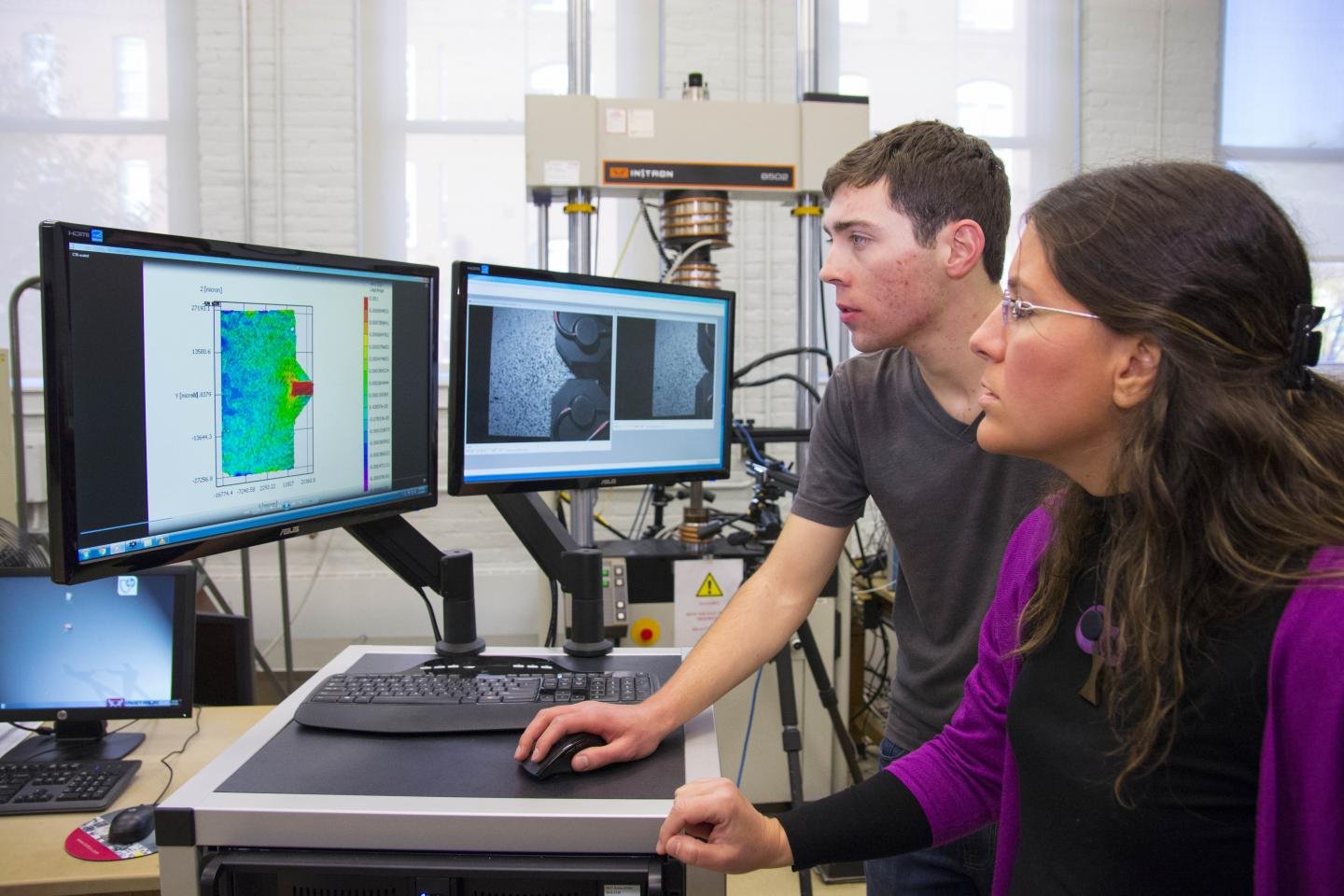Detecting and Predicting Fatigue-related Cracks in Aircraft Components with VIC-3D
Researchers at the Integrative Materials Design Center (iMdc) at the Worcester Polytechnic Institute are being funded by the U.S. Army Research Office to better understand how stress and fatigue can impact aircraft components on a microscopic level. Led by Dr. Diana Lados, the team is using digital image correlation systems from Correlated Solutions to study the growth of tiny cracks in aluminum parts as they are stressed in a servo-hydraulic testing machine.
Diana Lados (right), Milton Prince Higgins II Distinguished Professor of Mechanical Engineering at Worcester Polytechnic Institute (WPI), and PhD candidate Anthony Spangenberger analyze the deformation (or strain) results from a fatigue damage evaluation test performed on an aircraft aluminum alloy. (Credit: Worcester Polytechnic Institute)
Diana Lados (center), Milton Prince Higgins II Distinguished Professor of Mechanical Engineering at Worcester Polytechnic Institute (WPI), and PhD candidates Yuwei Zhai (left) and Anthony Spangenberger set up a fatigue damage evaluation test on an aircraft aluminum alloy using three high-speed cameras and digital image correlation. (Credit: Worcester Polytechnic Institute)



